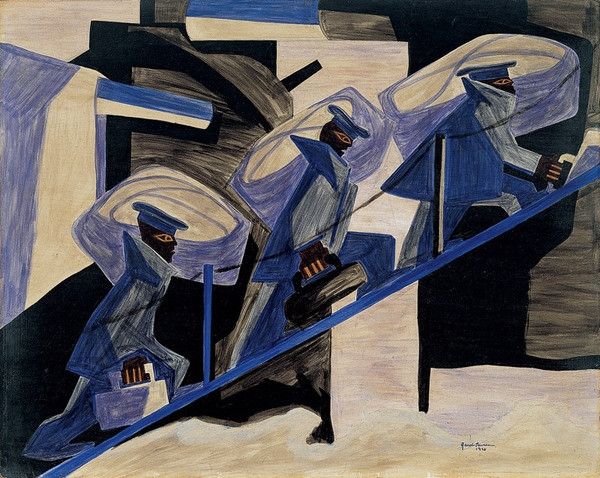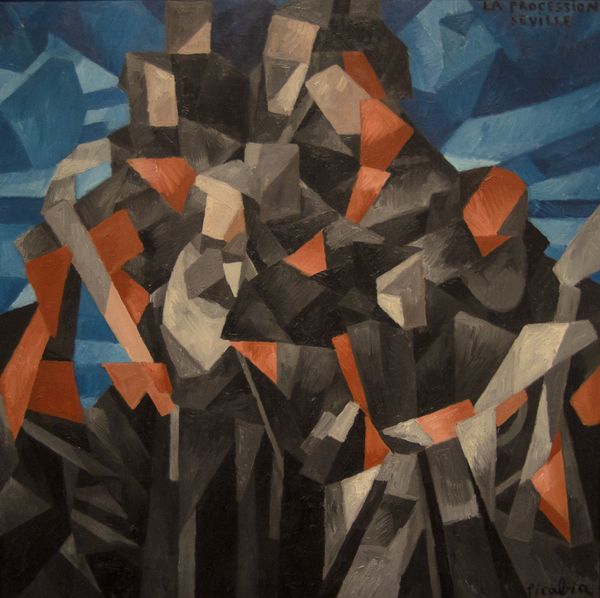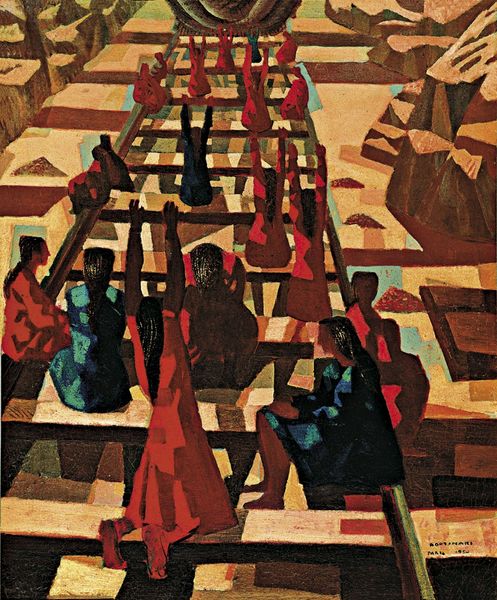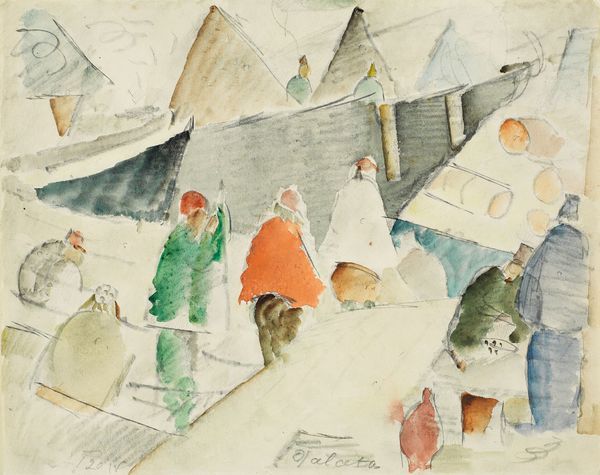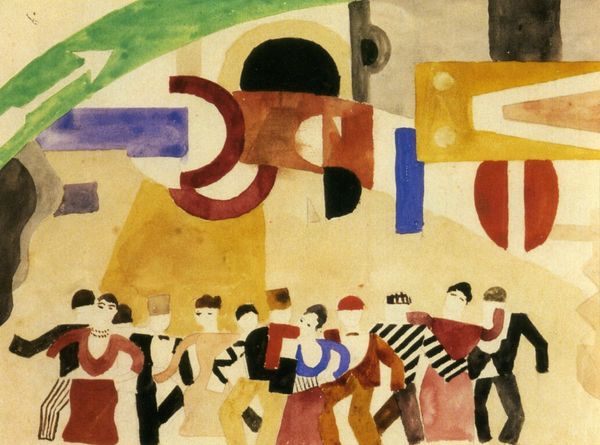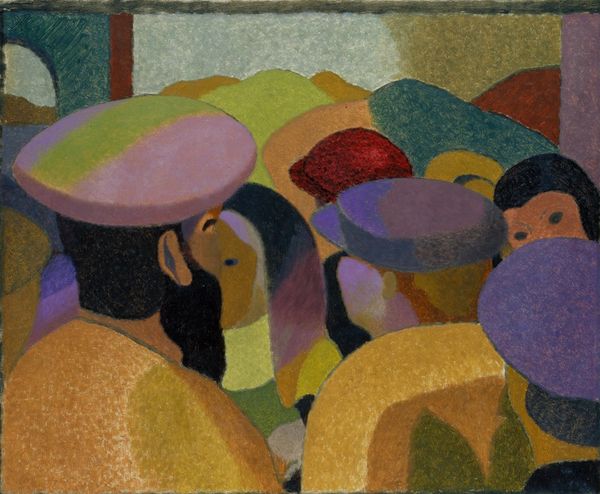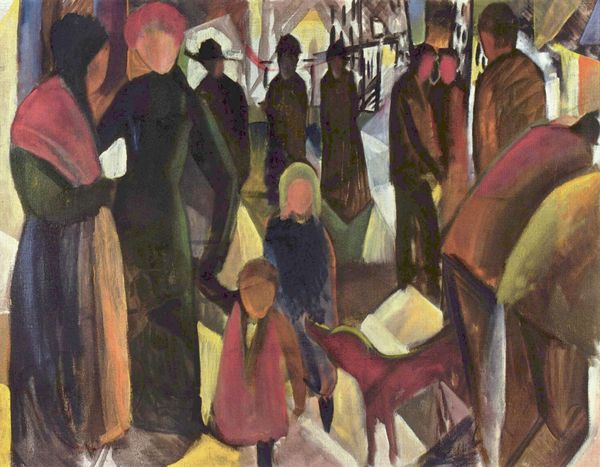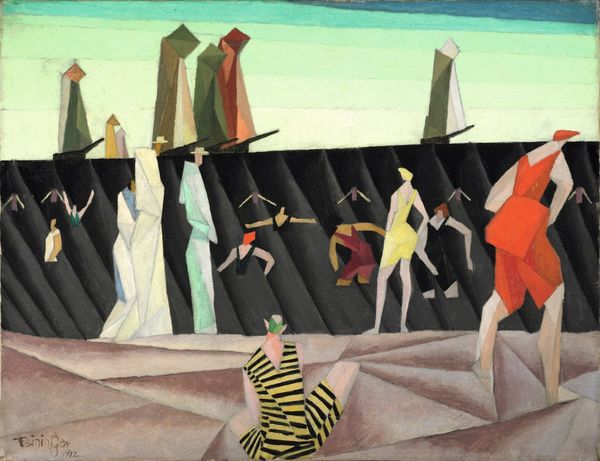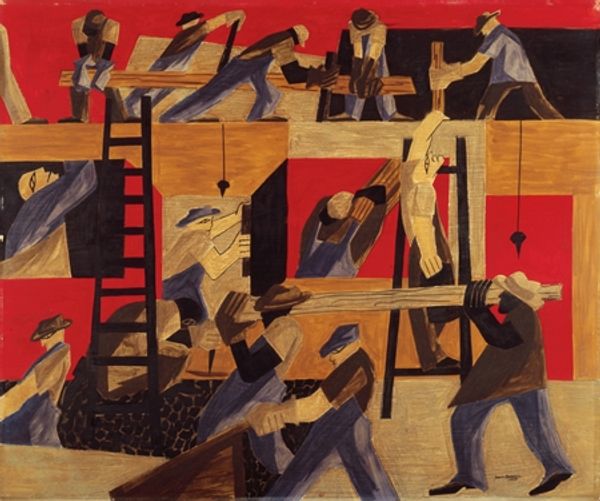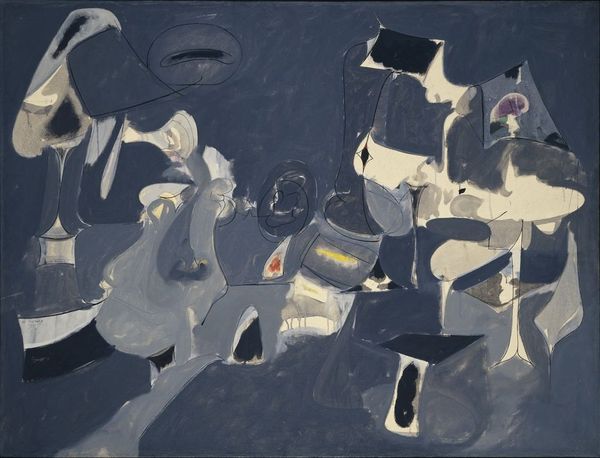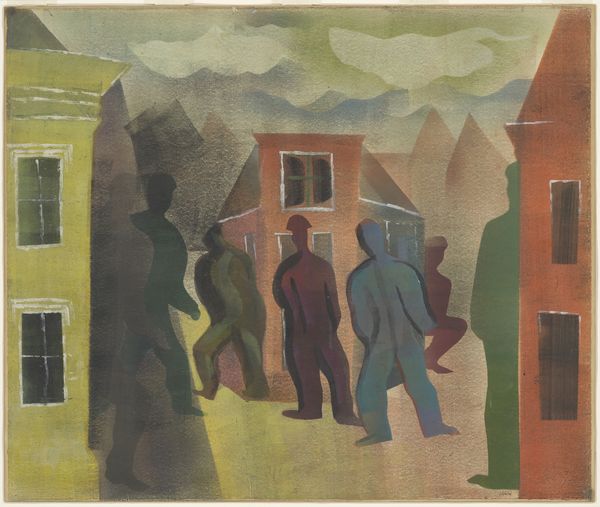
painting, oil-paint, mural
#
narrative-art
#
painting
#
oil-paint
#
landscape
#
figuration
#
men
#
history-painting
#
mural
#
modernism
#
realism
Copyright: Public domain
Editor: Winifred Knights’ “The Deluge,” painted in 1920 with oil on canvas, depicts figures fleeing some unseen cataclysm. I am struck by the composition's flattened perspective and the almost geometric rendering of the figures. What catches your eye, viewing it from a formalist perspective? Curator: The artist's manipulation of form and space are particularly interesting here. Note how Knights employs a limited palette to unify the composition, creating a sense of tonal harmony. The repeated angularity of the figures contributes to a rhythm, directing our gaze upwards toward the ambiguous horizon. How does the painting engage with traditional landscape conventions? Editor: I see some connection between Renaissance fresco painting, where figures occupy shallow spaces with defined planes. Here the geometry is much more prominent though, everything feels so flattened. Do you think that influences how we view the figures within this narrative? Curator: Precisely. The geometric simplification flattens the forms, thus heightening the emotional impact, a semiotic element within this pictorial language. Note, too, how color isn't deployed realistically. It's primarily organizational; the shapes and tonal relations take precedence. To me, this places emphasis on a formal structure. Editor: It’s as though she is deprioritizing any form of pictorial depth. Curator: Absolutely. This lack of depth challenges conventional notions of pictorial space and narrative perspective, shifting the viewer's attention to formal arrangements over literal interpretations. By eschewing detailed representation in favor of compositional clarity, what effect is being emphasized? Editor: This really opened up new ways of viewing it and it’s structure. I was too focused on its theme. Curator: And I, on its formal nature! An aesthetic interplay can be just as enriching.
Comments
No comments
Be the first to comment and join the conversation on the ultimate creative platform.
